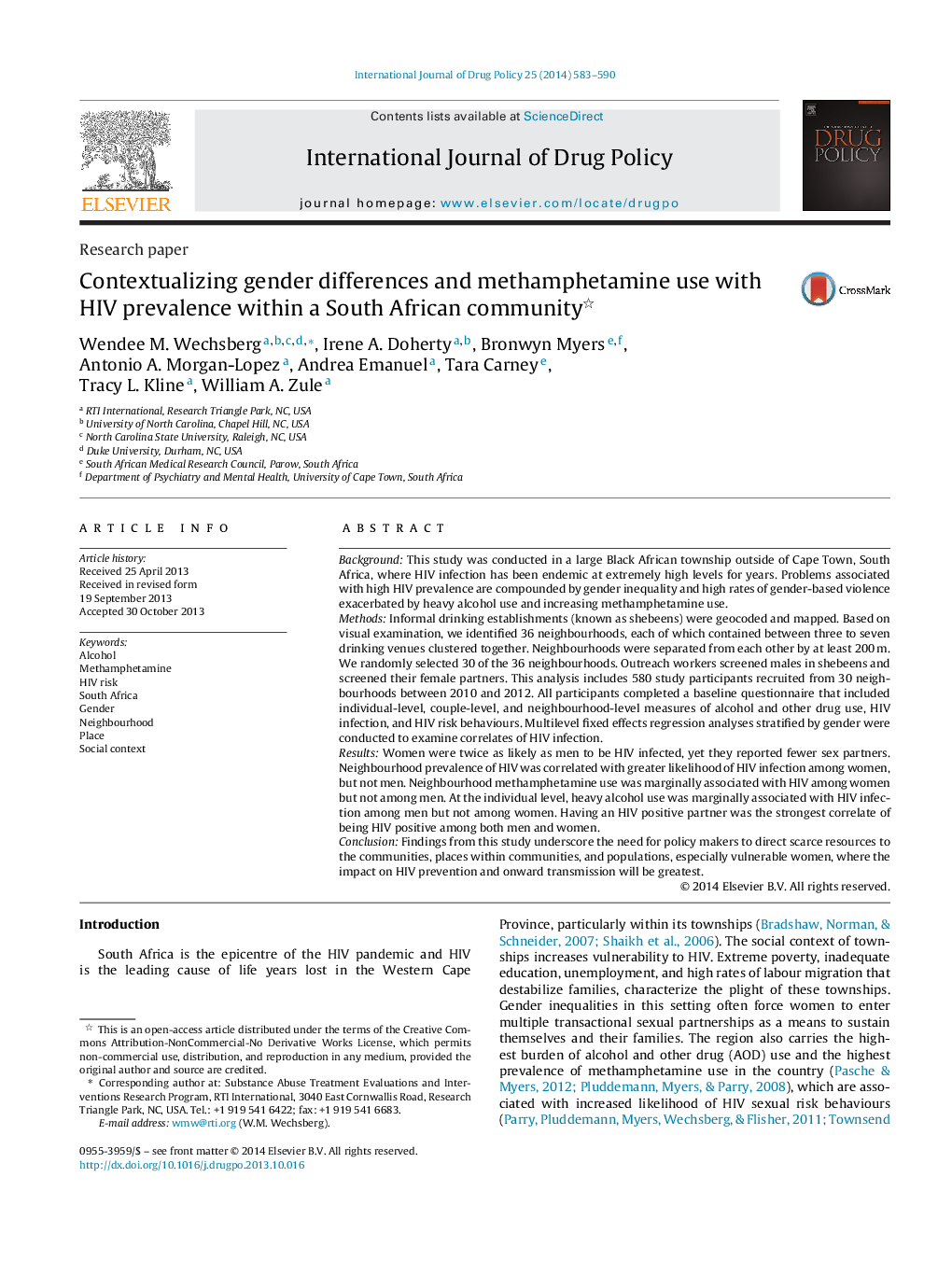| کد مقاله | کد نشریه | سال انتشار | مقاله انگلیسی | نسخه تمام متن |
|---|---|---|---|---|
| 1075132 | 1486295 | 2014 | 8 صفحه PDF | دانلود رایگان |

BackgroundThis study was conducted in a large Black African township outside of Cape Town, South Africa, where HIV infection has been endemic at extremely high levels for years. Problems associated with high HIV prevalence are compounded by gender inequality and high rates of gender-based violence exacerbated by heavy alcohol use and increasing methamphetamine use.MethodsInformal drinking establishments (known as shebeens) were geocoded and mapped. Based on visual examination, we identified 36 neighbourhoods, each of which contained between three to seven drinking venues clustered together. Neighbourhoods were separated from each other by at least 200 m. We randomly selected 30 of the 36 neighbourhoods. Outreach workers screened males in shebeens and screened their female partners. This analysis includes 580 study participants recruited from 30 neighbourhoods between 2010 and 2012. All participants completed a baseline questionnaire that included individual-level, couple-level, and neighbourhood-level measures of alcohol and other drug use, HIV infection, and HIV risk behaviours. Multilevel fixed effects regression analyses stratified by gender were conducted to examine correlates of HIV infection.ResultsWomen were twice as likely as men to be HIV infected, yet they reported fewer sex partners. Neighbourhood prevalence of HIV was correlated with greater likelihood of HIV infection among women, but not men. Neighbourhood methamphetamine use was marginally associated with HIV among women but not among men. At the individual level, heavy alcohol use was marginally associated with HIV infection among men but not among women. Having an HIV positive partner was the strongest correlate of being HIV positive among both men and women.ConclusionFindings from this study underscore the need for policy makers to direct scarce resources to the communities, places within communities, and populations, especially vulnerable women, where the impact on HIV prevention and onward transmission will be greatest.
Journal: International Journal of Drug Policy - Volume 25, Issue 3, May 2014, Pages 583–590